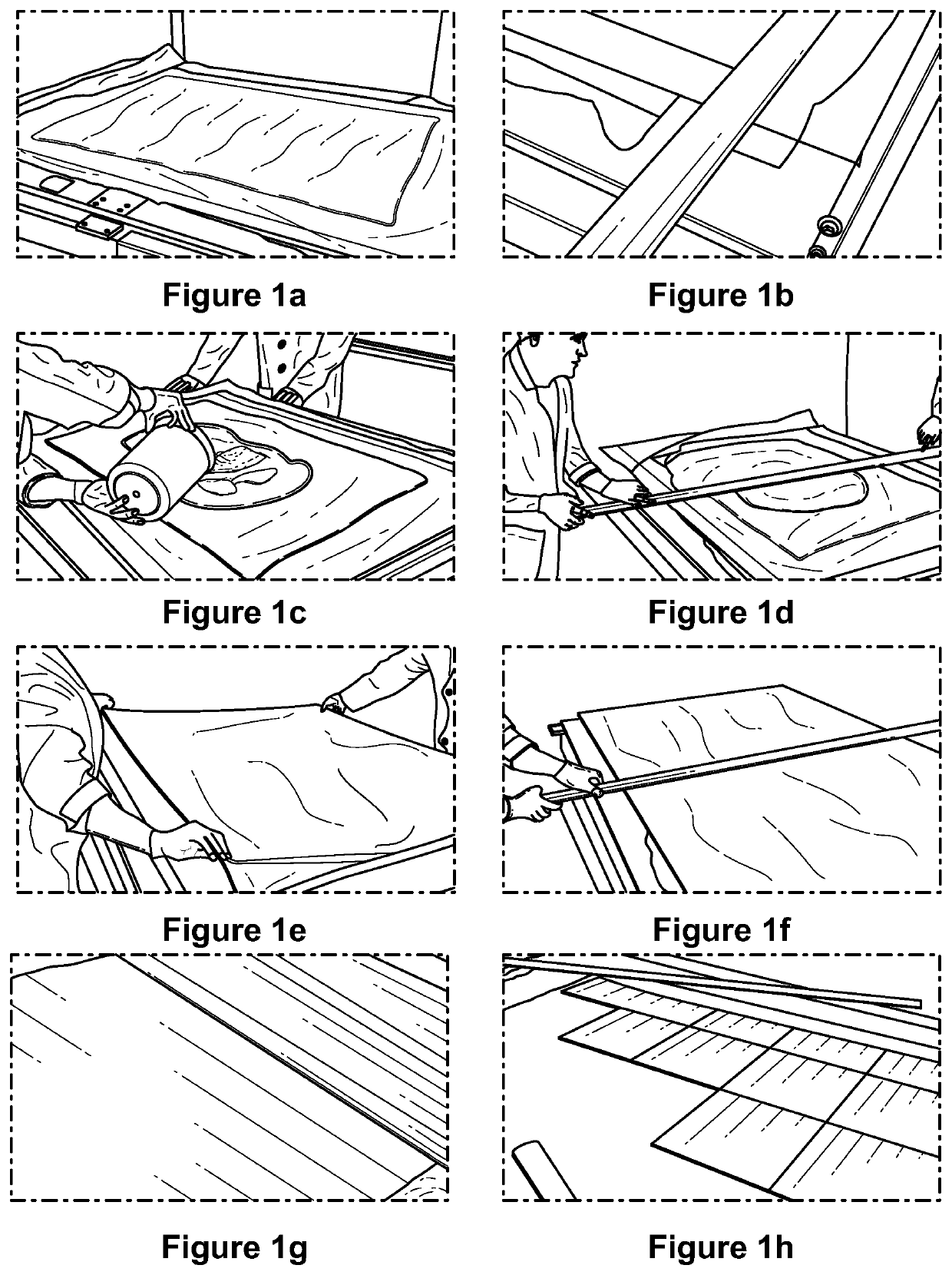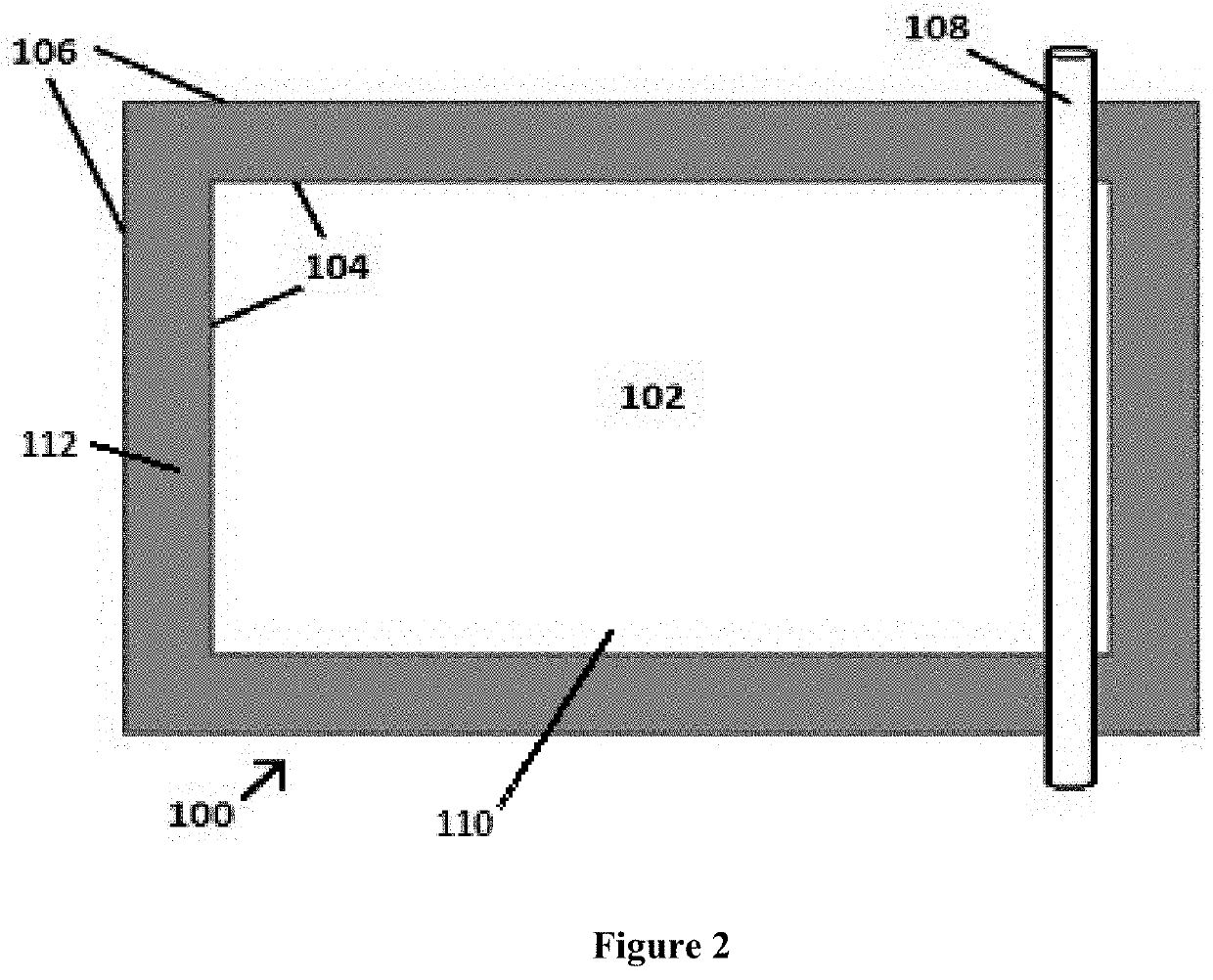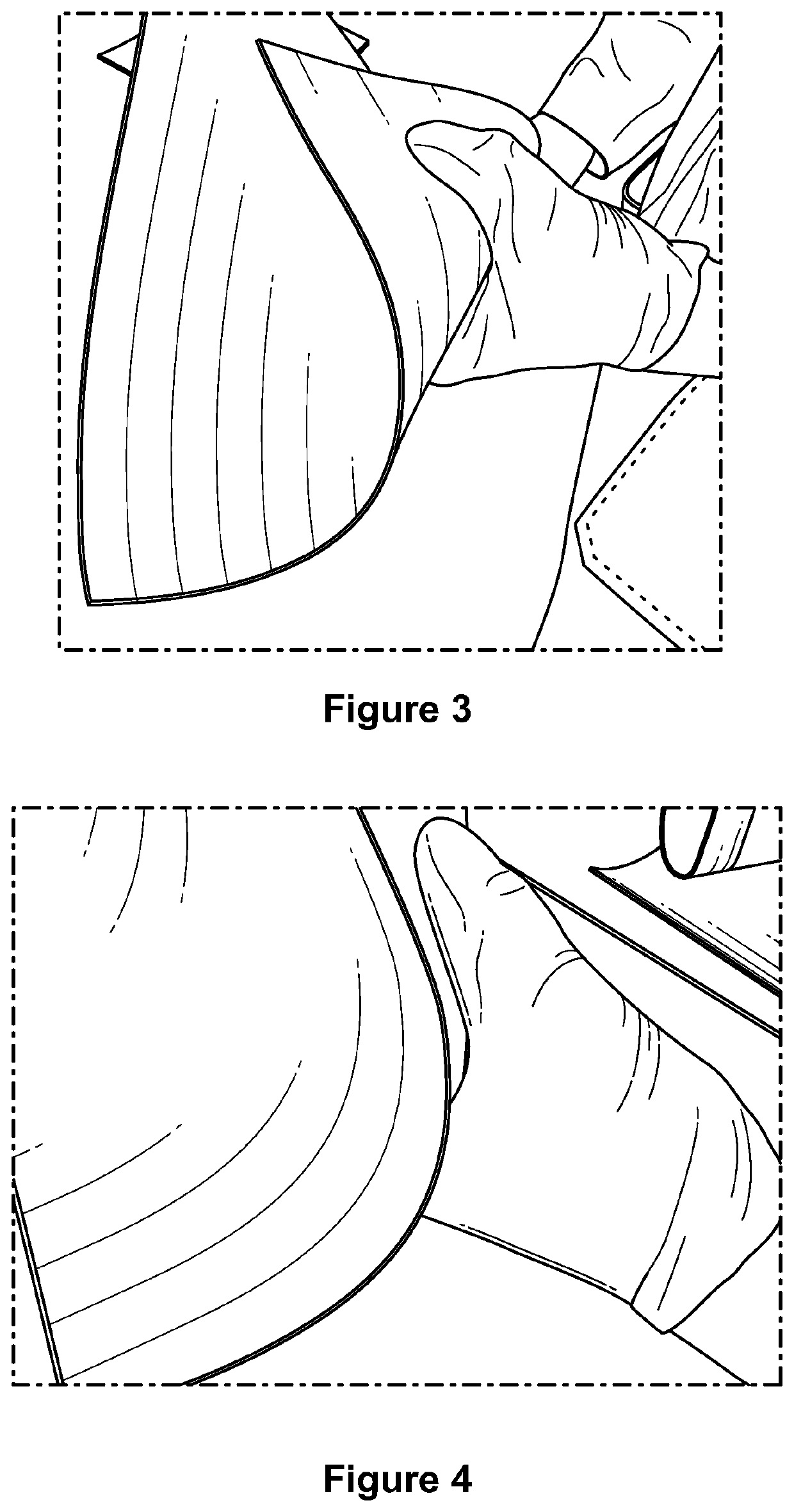Thin aerogel materials
a technology of aerogels and materials, applied in the direction of cell components, jackets/cases, cell maintenance/service, etc., can solve the problems of significant pore collapse and gel shrinkage, aerogels can be extremely brittle and difficult to handle, and it is difficult to incorporate aerogels into thermal batteries
- Summary
- Abstract
- Description
- Claims
- Application Information
AI Technical Summary
Benefits of technology
Problems solved by technology
Method used
Image
Examples
example 1
Casting Table
[0104]FIG. 2 illustrates a casting table 100 which was used for the production of thin sheets of Fiber-Reinforced Aerogel Materials. A 4 ft×6 ft sheet of PETG (polyethylene terephthalate glycol-modified) having a thickness of 0.078 inches (˜2 mm) was placed onto a Teflon-covered 4 ft×6 ft table. A 3 ft×5 ft rectangle of PETG material was cut and removed from the interior of the PETG sheet. The remaining PETG material provided thickness control during the subsequent casting of the aerogel material. The thickness of the PETG material was chosen to provide a final cast thickness of 0.070 inches (˜1.75 mm) for the aerogel insulation material.
[0105]The resulting casting table 100 comprised a 3 ft×5 ft casting area 102, enclosed by a rectangular PETG casting frame which was 0.078 inches thick (˜2 mm), and which had a perimeter of 4 ft×6 ft on the exterior edges 106, a perimeter of 3 ft×5 ft on the interior edges 104, and a uniform 1 ft width from the outer edges 106 to the in...
example 2
Preparation of Fiber-Reinforced Aerogel Materials
[0106]FIGS. 1a-1h illustrate a method for producing thin aerogel materials of a uniform thickness. A sol-gel solution with a target density of 0.06 g / cc was prepared by hydrolyzing tetraethyl orthosilicate (TEOS) and methyltriethoxy silane (MTES) in the presence of acid. SiC F1200 Black (Carborex© F1200, Washington Mills) was added to the sol-gel solution.
[0107]A lofty fiber batting (Quartzel©), Saint-Gobain Quartz) was placed into the casting area of the casting table of Example 1 (FIG. 1a). Ammonia was added to the sol-gel solution to initiate gelation. The sol-gel solution was then applied over a large portion of the batting material (FIGS. 1c and 1d). A nonporous Teflon sheet was placed over the casting table to minimize loss of ammonia during the casting process (FIG. 1e).
[0108]While the sol-gel solution was still in a substantially fluid state, the solution was spread throughout the batting using a roller. A roller bar was place...
example 3
Thickness Testing
[0112]A sheet of aerogel material from example 2 was cut into 8 in×8 in coupons for testing (FIG. 1h). Sixteen thickness measurements were made on each of eighteen different coupons (for a total of 288 measurements) using a hand-held drop-gauge. These measurements were used to determine the overall thickness variation in a composite sheet, as well as product yield (based on thickness).
[0113]FIG. 5 shows the average thickness measurements for all 18 coupons, presented along with the respective variation percentages. All coupons exhibited thickness variation below 7%. At 100% yield, the overall average thickness was 0.0759″ with 4.6% variation. Coupons prepared by this method demonstrated good particle dispersion and low thickness variation.
PUM
| Property | Measurement | Unit |
|---|---|---|
| thickness | aaaaa | aaaaa |
| thickness | aaaaa | aaaaa |
| thickness | aaaaa | aaaaa |
Abstract
Description
Claims
Application Information
 Login to View More
Login to View More - R&D
- Intellectual Property
- Life Sciences
- Materials
- Tech Scout
- Unparalleled Data Quality
- Higher Quality Content
- 60% Fewer Hallucinations
Browse by: Latest US Patents, China's latest patents, Technical Efficacy Thesaurus, Application Domain, Technology Topic, Popular Technical Reports.
© 2025 PatSnap. All rights reserved.Legal|Privacy policy|Modern Slavery Act Transparency Statement|Sitemap|About US| Contact US: help@patsnap.com



